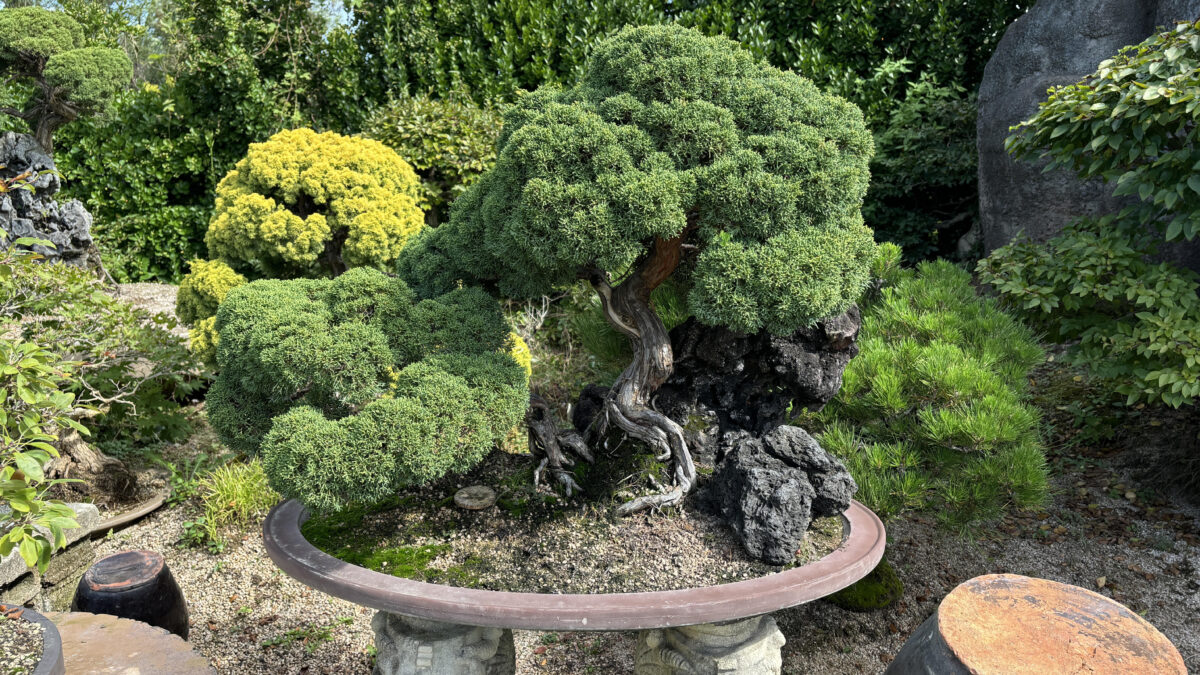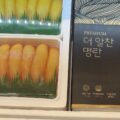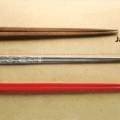Korean Bonsai: Harmony in Miniature

The art of Bonsai originated in China under the name Pénzāi (盆栽) during the Han dynasty (206 BCE – 220 CE).
What means Bonsai?
盆 (pén) is composed from 皿 (min, container or pot), 分 (fēn, divide)
栽 (zāi) is composed from 木 (mù, tree, wood) 戈 (gē, spear) and 十 (ten) in its ancient form, related to the action of planting
盆栽 (pénzāi) means “plant cultivated in a pot” and this term influenced the Japanese word Bonsai from where come the English one
From China to Korea
In Korea, the art of miniature trees was gradually adopted from China during the 7th to 9th centuries, particularly during the Silla and Goryeo dynasties. Aristocrats and Buddhist monks cultivated these potted trees, emphasizing a natural and lively aesthetic rather than replicating an entire landscape. This approach led to the development of Bunjae (분재), which values the natural curves of the trunk, asymmetry, and the living character of the tree. Unlike the Japanese Bonsai, Bunjae focuses on spontaneity and vitality, with techniques including pruning, wiring, and shaping to reflect the tree’s age and strength over generations.
Taoist Legend
According to an old Taoist legend, a wandering monk carried a tiny pine tree in a tea bowl. He would say, “He who can hold a mountain in a bowl will never be uprooted,” symbolizing inner mastery and calm strength.
Several types of Bunjae
¤ Ilbanjae – Single Tree
A single tree in a pot that emphasizes the natural curve of the trunk, asymmetry, and movement. Often a pine or juniper with twisted trunk and irregular branches.
¤ Gongjae – Multiple Trees
Several trees planted in the same pot to mimic a small grove or miniature forest. The arrangement balances each tree and creates a sense of depth.
¤ Jongjae – Tree with Rock
A tree grown on or beside a rock, symbolizing the strength and resilience of nature. The trunk and roots adapt to the shape of the rock.
¤ Hojae – Cascade Tree
A tree with a trunk that descends below the pot or leans dramatically. Often used for pines or conifers, inspired by trees growing on cliffs or shaped by strong winds.
¤ Jeongjae – Upright Formal Tree
A straight, symmetrical trunk representing balance and harmony. Commonly used in official exhibitions.
¤ Mokjae – Natural or Free Style
Trunk and branches are left as natural as possible, emphasizing vitality and the living character of the tree. Minimal wiring or strict pruning, with a spontaneous, free-flowing style distinct from Japanese bonsai.
To know more about Korean Bunjae
The Seoul Bonsai Museum (분재박물관) was established in 1988. It was founded by Director Kim Jae-in to promote and preserve the art of Bunjae in Korea. The museum is located in the Seocho District of Seoul, nestled near the foot of Woomyunsan Mountain.
Want to do your own Bonsai?
I recently did my very first Bonsai and I loved it! Contact us to custom your own Korean Bonsai experience!



